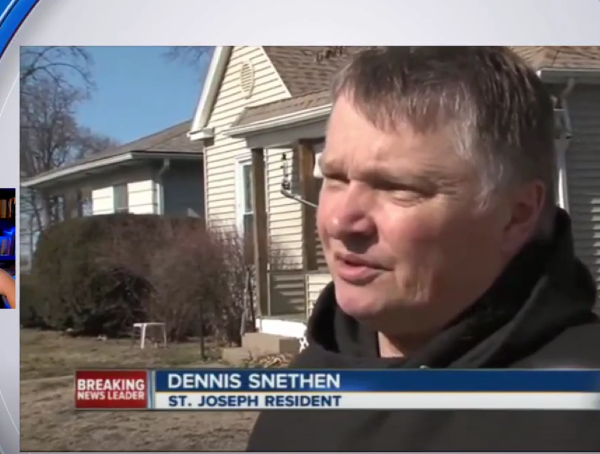NewsLab.org: Powered by the University of Mississippi Meek School of Journalism & New Media
 Deborah Acosta is a video journalist and filmmaker at the New York Times. She specializes in innovative forms of documentary production. For the past year, she’s focused on producing live, interactive, participatory video journalism, often through the use of crowdsourcing. She recently spoke to Abbie McIntosh, a student at the Meek School of Journalism & New Media.
Deborah Acosta is a video journalist and filmmaker at the New York Times. She specializes in innovative forms of documentary production. For the past year, she’s focused on producing live, interactive, participatory video journalism, often through the use of crowdsourcing. She recently spoke to Abbie McIntosh, a student at the Meek School of Journalism & New Media.
Q: I watched your “Fragments of a Life” last night. Why do you think it’s important to incorporate live production into a story?
A: I think that when it comes to a story about themes as universal as life, love and loss, incorporating the wider audience helps you reach higher truths in your reporting. Life, love and loss is super universal, right? And when you have lots of different people engaging and sharing their thoughts about those topics, it allows you to kind of arrive at more interesting insights that if you did it on your own. So that’s one thing in that particular case that I think really elevates the piece.
Q: Do you go live from your own Facebook page or do you use a New York Times page?
A: Yeah, so in general, for example for the [Fragments of a Life] piece, the first two live videos that we did we did from the New York Times page. It creates a much larger audience obviously for what you’re doing. When I started making phone calls and doing slightly more in-depth reporting to find out who this person was and who they’re connected to, I did those on my personal page because I wasn’t just going to make phone calls on the main New York Times page. I didn’t want to bore people to tears, but whoever was really interested in following me in that journey of making phone calls and like more power to them, they were up on my Facebook page I “liked” to them from the New York Times page. I was like ‘Hey guys, if you want to continue following this come to Deborah Acosta’s page.’ And they could and that’s how we got those pieces.
Q: You do Facebook live, but have you incorporated other social media? Like Instagram live?
A: My task for that year was Facebook live, to use Facebook live as the platform and at the time there wasn’t any, there weren’t any other options. There was Periscope, but that a very totally different experience, so we went with Facebook. There’s another group at the Times that focuses on Snapchat and like Snapchat, not live, but Snapchat videos and incorporating that into their reporting. There’s another group that, now we’re on Snapchat Discover, so there’s a whole group of people there that created content just for Snapchat Discover or reuses other pieces of content and puts them on Snapchat Discover and recuts them or whatever. So, there’s like many different types of people at the Times that are focusing on all these different social media ventures.
Q: You’ve talked about crowdsourcing. What exactly is that?
A: Crowdsourcing is basically a general term used for collecting information about the world via like what people take out on the streets through photography or video, through the use of social media. Facebook Live, doing those live videos and then taking their audio bits and incorporating that and incorporating their comments into the video, that’s crowdsourcing. Going into social media to find tips and clues on a story, that’s crowdsourcing. It’s going into these big crowds through these social media platforms and finding little stories within them.
Q: What do you think [crowdsourcing] is important to incorporate?
A: Because, we do a lot of that when we cover breaking news situations. Like for example, long time ago when I was more focused on that kind of thing, like for example we had these horrible attacks that happened, like the one that happened in Paris. At the moment that it happened, you know we’re not on the ground there. We don’t know what’s going on. But we do know that we can go on Instagram or go on Facebook or on Twitter or on Snapchat and see what people are sharing in that moment and then get a lot of clues about what it is that’s going on and contact those people directly and be like ‘Hey where are you? What are you doing? What is going on?’ like the moment that that happened, I went onto Instagram and I saw a guy hiding in a café nearby, literally in the moment that it occurred, and I’m texting with him. This guy in Paris that has just run from this theater because of what just had happened. And he’s telling me what’s going on and he’s safe. He’s in a café. He’s going to head back home. He’s going to send me photography. So, like that is so powerful to be able to do. Otherwise, how am I going to find out what’s going on down there? Unless I can hop on a flight or call a stringer, of course we have stringers, they show up whatever, but literally in the moment that is happening to be able to connect with someone via Instagram, that’s on the ground in a café experiencing it that moment; that’s the power of social media.
Q: Then you were talking about breaking news and going live. How do you decide between a camera and going live? Have you been faced with a situation where you had to choose?
A: No, I haven’t had to choose lately. Right now, I’m focused more on doing more traditional videography. It’s tough. I think that you know there’s a lot of opportunities, I think there were moments when I was in Houston where I was like ‘This would be a good live video right now.’ And at the time I wasn’t paired up with an editor back at the office that was able to empower me to say ‘Yes, you can go live from The New York Times page.’ I could’ve gone live on my own Facebook page, and maybe I should have, but I think when you’re working with an institutional account like The New York Times Facebook page, you really need to be connected to an editor that is ready to go and at a drop of a hat, tell you yes go live. Right now, I don’t have the setup that I had in this past year. It makes it more difficult. Maybe I should be going live on my own page more often. Maybe that’s the way around that, but I think there are certain opportunities where you’re like, ‘I should go live right now.’ For example, in Houston the connectivity never went down. There was always connectivity. It was more of a flood story than anything else. So, I think there were a lot of really interesting opportunities to go live for a lot of people and I didn’t see that a lot, actually. People didn’t live as much as you would think.
Q: Do you think it’s just because people are scared to do it?
A: Yes, and it’s just not part of their MO. They’re just not used to doing it, so they don’t do it.








